#rudyard dickens
Text
Cruise Ship Intro Scene - Screenshot Redraw - Guilty Party:

Cruise Ship Intro Scene - Original Screenshot - Guilty Party:

Ling Ling: …and the criminal mastermind…
Kid Riddle: …and the missing manatee!
Starting to redraw this scene or screenshot with my new art style, because I think that I'm starting to improve and to update my new art style, but this time with some shading and lightning in it. =)
And anyways, I redraw this scene or screenshot from one of the cases in Disney's Guilty Party. And to be honest, I started to like how Ling Ling smiles at Kid Riddle as he mentions Hugh the Manatee - after she mentions Mr. Valentine, which it causes me to find them really adorable in this moment. How pretty adorable. =D
And for now, since it's now in December, I may start trying my new art style on my next drawing or artwork for now. And I'm pretty glad that I made my new art style for good. =)
(Reminders)
- Kid Riddle and Ling Ling - Disney's Guilty Party
(This artwork can be found in DeviantArt, so here's the link!):
#guilty party#guilty party wii#disney's guilty party#disney#ling ling#ling ling johnson#kid riddle#rudyard dickens#ling ling & kid riddle#kid riddle & ling ling#ling ling & rudyard#rudyard & ling ling#screenshot redraw#screenshot remake#redraw#redraw scene#redraw screenshot
3 notes
·
View notes
Text
What will it be like if Digimon Adventure 02 had a "Neverland" arc?
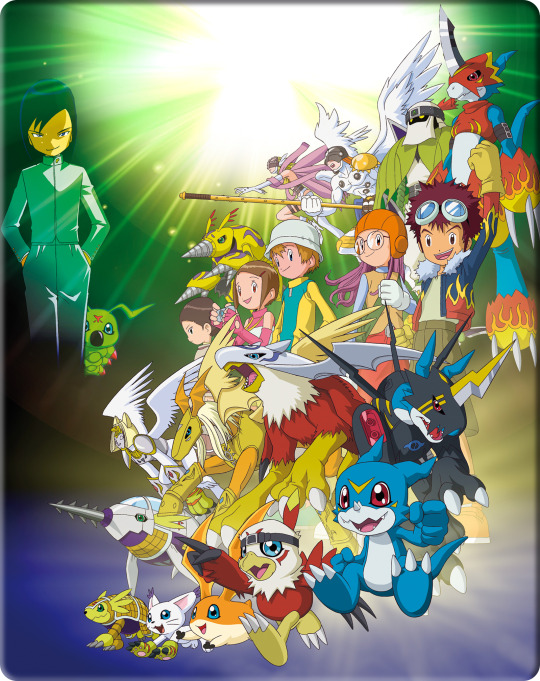
If that was the case, we see a crossover with Digimon and Peter Pan. Plus, if Digimon paid tribute to classic literature, poetry, and drama, the arc would've featured original texts and dialogues from these great authors of all time.
William Shakespeare
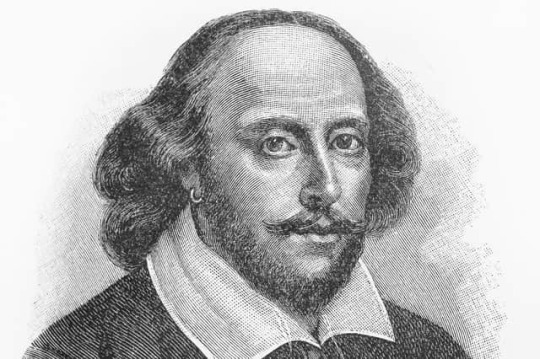
Hans Christian Andersen
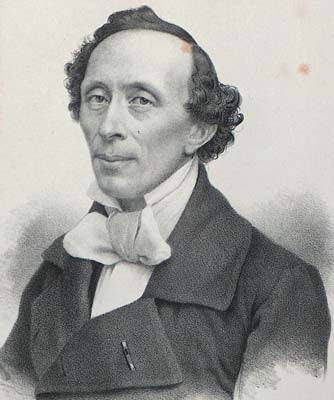
The Brothers Grimm
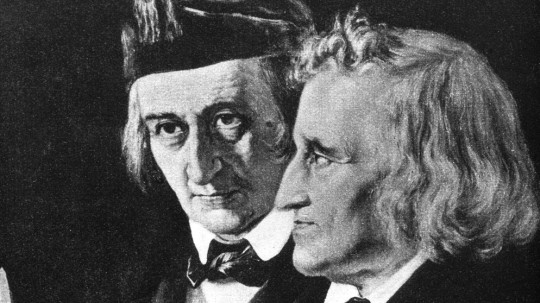
Rudyard Kipling
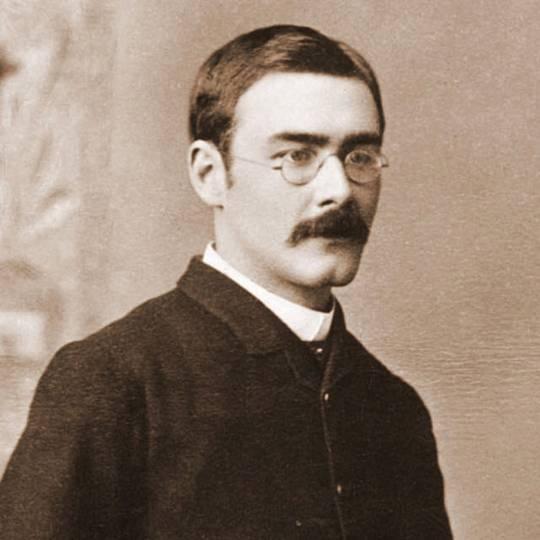
Victor Hugo
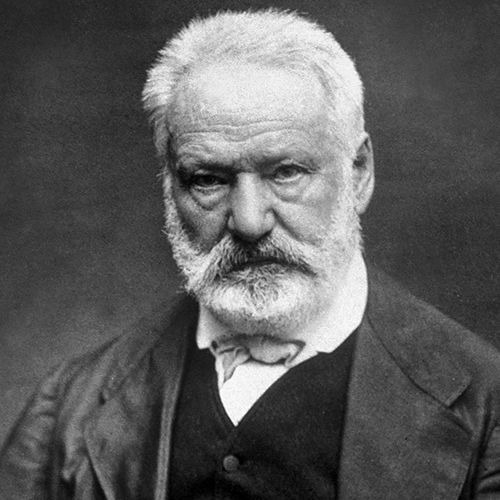
Jules Verne
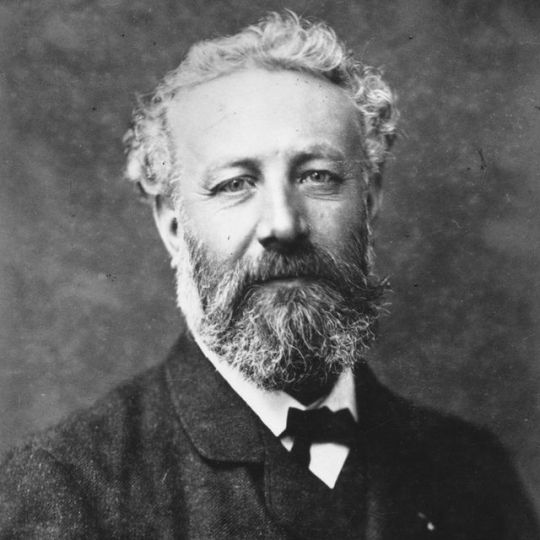
Arthur Conan Doyle

Edgar Allen Poe

Robert Louis Stevenson
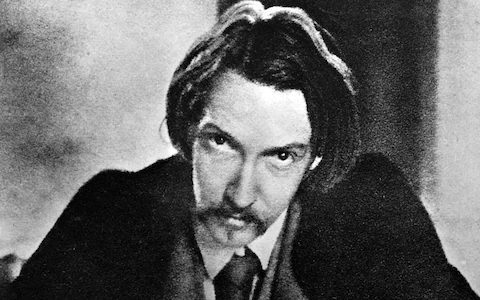
Charles Dickens
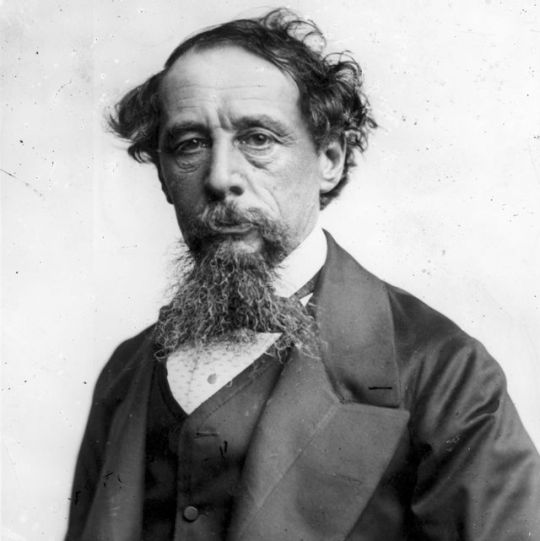
H.G. Wells
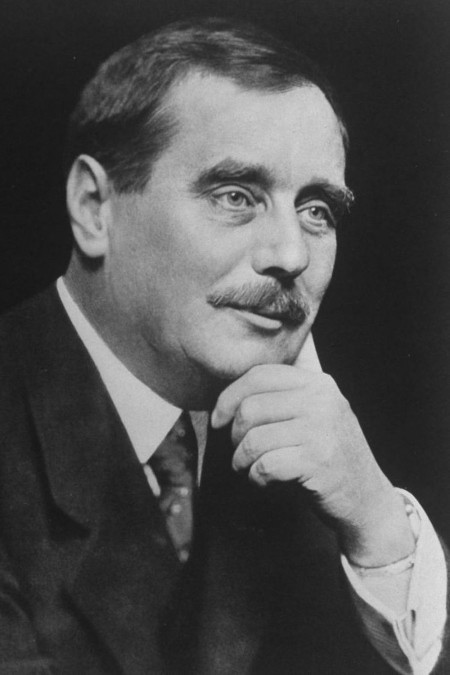
A.A. Milne
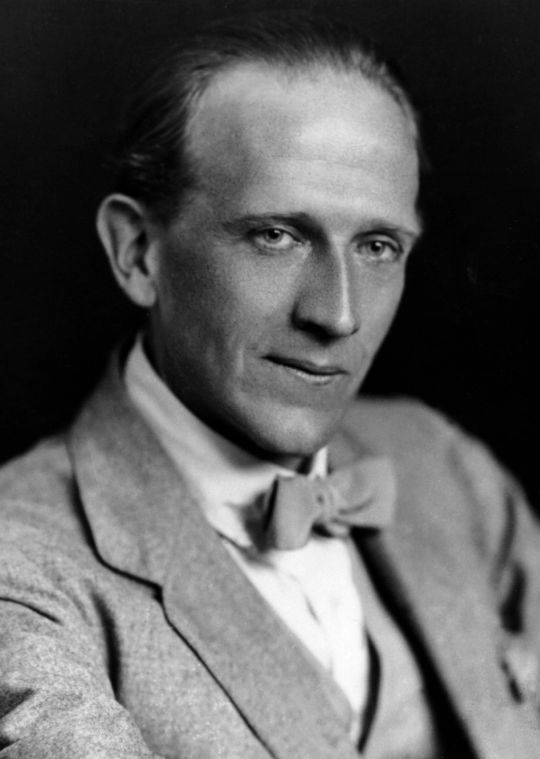
L. Frank Baum
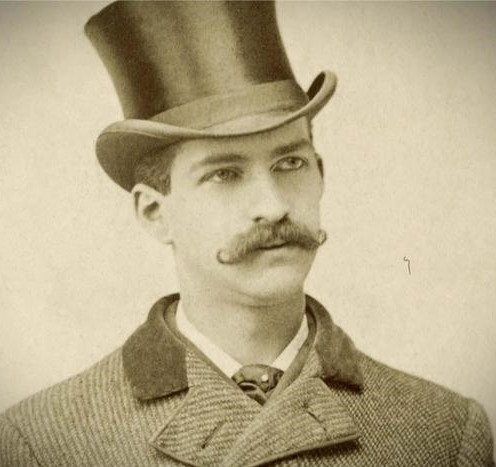
Lewis Carroll
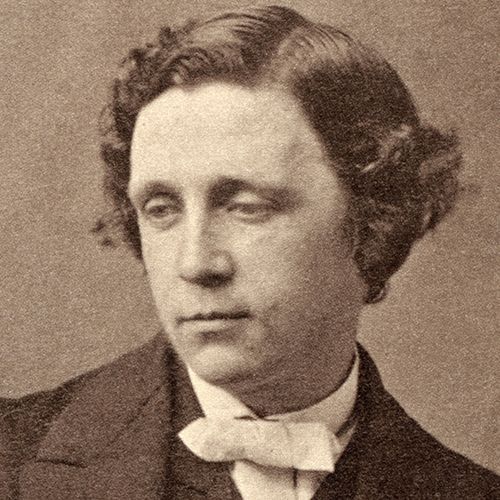
J.M. Barrie

Imagine the astonishing adventures the DigiDestined and their friends will have if they encounter Peter Pan and travelled to Never Never Land. I figure it would've been amazing to introduce kids to the world of literature through the stories and characters created by these brilliant writers.
#digimon#digimon adventure#digimon adventure 02#digimon 02#digimon adventure zero two#digimon zero two#writers#writers and poets#playwright#poet#william shakespeare#hans christian andersen#the brothers grimm#rudyard kipling#victor hugo#jules verne#arthur conan doyle#edgar allen poe#robert louis stevenson#charles dickens#h.g. wells#a.a. milne#l. frank baum#lewis carroll#j.m. barrie
4 notes
·
View notes
Text
Captain Murderer - Charles Dickens
Let's begin somewhere pretty simple. A children's story about a cannibalistic 'Captain', rightfully brought to justice. This is far from the original Dickensian content, maybe more of a creation of nostalgia than of creative intent, especially since it's his nursemaid's tale, but if you want to interpret the Captain as a metaphor for the dark satanic Britain, post structuralism is right up the alley.

My Own True Ghost Story - Rudyard Kipling
There is something awfully comforting in Kipling's writings, and this is perhaps a short story most will be acclimated to. The vivid description of the 'Dak-bunglow', a distinct feel of the post British-raj, the famous ghostly billiards game and above all, the reverberating cries of the Sahib, "Mangal Khan, brandy-pani do".

The Alchemist - H.P. Lovecraft
This title is perhaps a dead giveaway for a (dare I say, more popular) novel of the similar name by Paulo Coelho. However, this is far from the conventional Lovecraftian tale of terror, and for a short story there's quite a bit that goes into building the premise of the plot. It does follow the traditional trajectory though, there's the ancient curse, the curious protagonist and, as the title suggests Alchemy at the centre of it all.

Fat and Thin - Anton Chekhov
It has been told that Chekhov is the man to read if one is ever to understand the craft of writing short stories. Chekhov brilliantly layers his characters in the form of two childhood friends meeting in adulthood, this time with the social constraint. It is really the dialogues and their simplistic presentation accumulating to the abrupt transformation and reverence to power that represents the modern farcical society (if one is to find humour in such things). And for Chekhov the absolute delight is not merely restricted to the content, but extends to the perceptive presentation itself.

#short story#rudyard kipling#anton chekhov#charles dickens#hp lovecraft#captain murderer#fat and thin#the alchemist#my own true ghost story
1 note
·
View note
Text
How many have you read out of the hundred?
Me: 64/100
Reblog & share your results
1. "Pride and Prejudice" by Jane Austen
2. "Crime and Punishment" by Fyodor Dostoevsky
3. "To Kill a Mockingbird" by Harper Lee
4. "1984" by George Orwell
5. "Great Expectations" by Charles Dickens
6. "One Hundred Years of Solitude" by Gabriel García Márquez
7. "Jane Eyre" by Charlotte Brontë
8. "The Catcher in the Rye" by J.D. Salinger
9. "War and Peace" by Leo Tolstoy
10. "The Great Gatsby" by F. Scott Fitzgerald
11. "Moby-Dick" by Herman Melville
12. "The Odyssey" by Homer
13. "Wuthering Heights" by Emily Brontë
14. "Anna Karenina" by Leo Tolstoy
15. "The Brothers Karamazov" by Fyodor Dostoevsky
16. "The Iliad" by Homer
17. "Frankenstein" by Mary Shelley
18. "Les Misérables" by Victor Hugo
19. "Don Quixote" by Miguel de Cervantes
20. "Middlemarch" by George Eliot
21. "The Picture of Dorian Gray" by Oscar Wilde
22. "The Scarlet Letter" by Nathaniel Hawthorne
23. "Dracula" by Bram Stoker
24. "Sense and Sensibility" by Jane Austen
25. "The Hunchback of Notre-Dame" by Victor Hugo
26. "The War of the Worlds" by H.G. Wells
27. "The Grapes of Wrath" by John Steinbeck
28. "The Canterbury Tales" by Geoffrey Chaucer
29. "The Portrait of a Lady" by Henry James
30. "The Jungle Book" by Rudyard Kipling
31. "Siddhartha" by Hermann Hesse
32. "The Divine Comedy" by Dante Alighieri
33. "A Tale of Two Cities" by Charles Dickens
34. "The Trial" by Franz Kafka
35. "Mansfield Park" by Jane Austen
36. "The Three Musketeers" by Alexandre Dumas
37. "Fahrenheit 451" by Ray Bradbury
38. "Gulliver's Travels" by Jonathan Swift
39. "The Sound and the Fury" by William Faulkner
40. "Emma" by Jane Austen
41. "Robinson Crusoe" by Daniel Defoe
42. "Tess of the d'Urbervilles" by Thomas Hardy
43. "The Republic" by Plato
44. "Heart of Darkness" by Joseph Conrad
45. "The Hound of the Baskervilles" by Arthur Conan Doyle
46. "The Strange Case of Dr Jekyll and Mr Hyde" by Robert Louis Stevenson
47. "The Prince" by Niccolò Machiavelli
48. "The Metamorphosis" by Franz Kafka
49. "The Old Man and the Sea" by Ernest Hemingway
50. "Bleak House" by Charles Dickens
51. "Gone with the Wind" by Margaret Mitchell
52. "The Plague" by Albert Camus
53. "The Joy Luck Club" by Amy Tan
54. "The Master and Margarita" by Mikhail Bulgakov
55. "The Red and the Black" by Stendhal
56. "The Sun Also Rises" by Ernest Hemingway
57. "The Fountainhead" by Ayn Rand
58. "The Bell Jar" by Sylvia Plath
59. "The Idiot" by Fyodor Dostoevsky
60. "The Book Thief" by Markus Zusak
61. "The Return of Sherlock Holmes" by Arthur Conan Doyle
62. "The Woman in White" by Wilkie Collins
63. "Things Fall Apart" by Chinua Achebe
64. "Treasure Island" by Robert Louis Stevenson
65. "Ulysses" by James Joyce
66. "Uncle Tom's Cabin" by Harriet Beecher Stowe
67. "Vanity Fair" by William Makepeace Thackeray
68. "Waiting for Godot" by Samuel Beckett
69. "Walden Two" by B.F. Skinner
70. "Watership Down" by Richard Adams
71. "White Fang" by Jack London
72. "Wide Sargasso Sea" by Jean Rhys
73. "Winnie-the-Pooh" by A.A. Milne
74. "Wise Blood" by Flannery O'Connor
75. "Woman in the Nineteenth Century" by Margaret Fuller
76. "Women in Love" by D.H. Lawrence
77. "Zen and the Art of Motorcycle Maintenance" by Robert M. Pirsig
78. "The Aeneid" by Virgil
79. "The Age of Innocence" by Edith Wharton
80. "The Alchemist" by Paulo Coelho
81. "The Art of War" by Sun Tzu
82. "The Autobiography of Benjamin Franklin" by Benjamin Franklin
83. "The Awakening" by Kate Chopin
84. "The Big Sleep" by Raymond Chandler
85. "The Bluest Eye" by Toni Morrison
86. "The Caine Mutiny" by Herman Wouk
87. "The Cherry Orchard" by Anton Chekhov
88. "The Chosen" by Chaim Potok
89. "The Christmas Carol" by Charles Dickens
90. "The City of Ember" by Jeanne DuPrau
91. "The Clue in the Crumbling Wall" by Carolyn Keene
92. "The Code of the Woosters" by P.G. Wodehouse
93. "The Color Purple" by Alice Walker
94. "The Count of Monte Cristo" by Alexandre Dumas
95. "The Crucible" by Arthur Miller
96. "The Crying of Lot 49" by Thomas Pynchon
97. "The Da Vinci Code" by Dan Brown
98. "The Death of Ivan Ilyich" by Leo Tolstoy
99. "The Decline and Fall of the Roman Empire" by Edward Gibbon
100. "The Divine Secrets of the Ya-Ya Sisterhood" by Rebecca Wells
#book#booklr#books#classical literature#classic academia#penguin clothbound classics#classical books#english literature#listing#that's bloody#william shakespeare#shakespeare#anne frank#the odyssey#the divine comedy#french#literature
11 notes
·
View notes
Text
This probably won’t be coherent, I’m coming down with a cold atm
I saw a tiktok that bothered me where a teacher was talking about books that she was removing from her classroom because the authors were problematic. Examples include Jack London, Flannery O’Connor, Rudyard Kipling, Orson Scott Card, James Dashner, Lemony Snickett, TJ Klune, Rainbow Rowell, etc.
And… like ok I’m not gonna be like “teehee racism/sexism/assault allegations are no big deal!” Because that’s a brain dead take
I just feel like this opens a discussion on reading from a critical lens, especially with classic authors, but modern authors, too.
Obviously there are exceptions. Authors like JK Rowling are actively malevolent with the money garnered from the success of their books, which are morally not okay to support.
But. If a book is already in your classroom, you’ve ALREADY given that author money, taking it out because of the author’s beliefs for the fear that it’ll seep into their writing and like influence people is questionable?
If you’re very worried about your student’s critical reading ability, you could lay out a warning like “yeah, that’s a southern gothic writer, so there’s gonna be a good deal of racism in there” or something like that
But. Idk. Especially in classics, you can’t just avoid them because the author was problematic. Every classic author was problematic. Mary Shelley was racist, Oscar Wilde was misogynistic and antisemitic, Edgar Allen Poe married his underage cousin, Aldous Huxley evidently found any woman not conforming to European beauty standards vile, William Golding reportedly raped a 15 year old girl, Charles Dickens was… well, Charles Dickens.
They weren’t good people, not by today’s morality standards at the least, and honestly not by their days either in many cases.
That doesn’t mean don’t read them, that means read with a critical eye. It’s absolutely necessary for your growth as a reader to be able to recognize prejudices in text, and if you, as a teacher, are avoiding giving that lesson to your students, I think you’re failing.
34 notes
·
View notes
Text
Thank you, @rowenabean, for tagging me to share twenty(-five) books dear to me. Insert ramble full of caveats and non-definitiveness, because I am an overthinker. But whatever. Let's do this. Here's what I got off the top of my head:
The Hobbit and The Lord of the Rings by Tolkien
How a Book is Made by Aliki
Stalky and Co. by Rudyard Kipling
The Works of Shakespeare (but most especially "Henry V," "Much Ado About Nothing," "Richard III," and "Romeo and Juliet")
Twilight Robbery by Frances Hardinge
Five Children and It by E. Nesbit
Great Tales from English History by Robert Lacey
The Man from Rocca Sicca by Reginald M. Coffey OP
The works of G. K. Chesterton (but especially The Ball and the Cross and The Napoleon of Notting Hill)
"The Man of Destiny" by George Bernard Shaw
Rosie Backstage by Amanda Lewis
Emily of New Moon and Emily Climbs by L. M. Montgomery
The Shadow of the Bear by Regina Doman
The Last Unicorn by Peter S. Beagle
The Hero's Guide to Saving Your Kingdom by Christopher Healey
The Iliad of Homer
The Brothers Karamazov by Fyodor Dostoevsky
The Works of C. S. Lewis (but especially The Screwtape Letters, The Abolition of Man, and The Chronicles of Narnia)
A Canticle for Leibowitz by Walter Miller
The Dialogues of Plato
The Works of Charles Dickens (especially David Copperfield, Nicholas Nickleby, The Pickwick Papers. A Tale of Two Cities, A Christmas Carol... um, better reel it in here.)
The Stormlight Archive series by Brandon Sanderson
The Man Born to Be King by Dorothy L. Sayers
"A Man for All Seasons" by Robert Bolt
The collected works of James Herriott and Gerald Durrell hiding in the cloakroom and holding out a single calling card in hopes of passing for one book.
No-pressure tagging anyone who's interested, but especially @informedimagining, @kindredspiritsnotsorare, @marietheran, @firefly-nightsky, and @mademoiseli.
Feel free to do 5, or 10, or 15, or whatever makes you happy.
17 notes
·
View notes
Photo
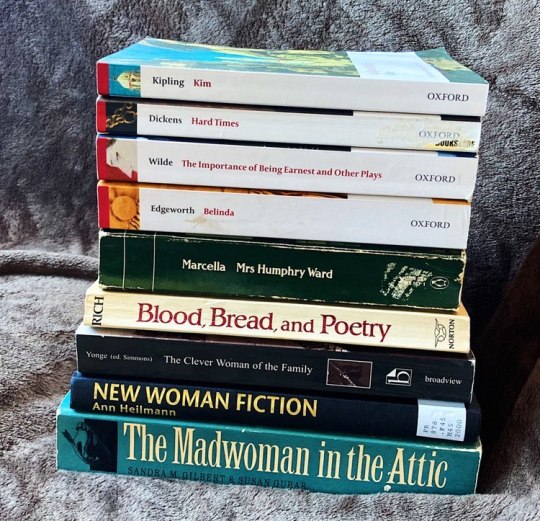
August Wrap Up
Well, this month has sucked. And that’s all I have to say about that.
Books Read: 15
But at least I read a lot. My favorite by far was Babel, and I really don’t have a least favorite. There was nothing under 3.5 stars. But seriously, go check out Babel, it’s freaking amazing. Books marked with ® are rereads.
Belinda by Maria Edgeworth - 5 stars
Blood, Bread, and Poetry: Selected Prose, 1979-1985 by Adrienne Rich - 4 stars
New Woman Fiction: Women Writing First-Wave Feminism by Ann Heilmann - 4 stars
Hard Times by Charles Dickens - 4.5 stars ®
Lady Windermere’s Fan by Oscar Wilde - 4 stars
The Clever Woman of the Family by Charlotte Mary Yonge - 4 stars
The Madwoman in the Attic: The Woman Writer and the Nineteenth-Century Literary Imagination by Sandra Gilbert and Susan Gubar - 4 stars
The Importance of Being Earnest by Oscar Wilde - 4 stars
Victorian Women’s Fiction: Marriage, Freedom, and the Individual by Shirley Foster - 4 stars
The Proper Lady and the Woman Writer: Ideology as Style in the Works of Mary Wollstonecraft, Mary Shelley, and Jane Austen by Mary Poovey - 3.5 stars
Kim by Rudyard Kipling - 3 stars
Babel, or the Necessity of Violence: An Arcane History of the Oxford Translators’ Revolution by R. F. Kuang - 5 stars
Marcella by Mary Ward - 3.5 stars
Mrs. Warren’s Profession by George Bernard Shaw - 4 stars ®
The ‘Improper’ Feminine: The Women’s Sensation Novel and the New Woman Writing by Lyn Pykett - 4 stars
On Tumblr:
There’s some stuff here; mostly tags, but I did participate in the first half or so of the 1K Pages Readathon.
1K Pages Readathon August 2022
July Wrap Up
Book Quotes: Babel by R. F. Kuang
Tagged: Sequel Stack Challenge
Tagged: Pink Book Stack
Tagged: Yellow Book Stack
Reblogged: Queer Fantasy Recommendations
On the Blog:
Hey, look, there’s something here! What a miracle!
Book Review: Babel: An Arcane History by R. F. Kuang
On YouTube:
And there’s a nice selection here, as usual.
My INSANE August TBR
July Wrap Up - 8 Books for Jane Austen July and Exams!
A Bookish Birthday Haul
Underrated Victorian Recommendations #3
Currently Reading 8/15/22
GarbAugust Trashy Book Tag
#booklr#august wrap up#book photography#monthly wrap up#books#wrap up#the madwoman in the attic#sandra gilbert#susan gubar#new woman fiction#ann heilmann#the clever woman of the family#charlotte mary yonge#blood bread and poetry#adrienne rich#marcella#mary augusta ward#belinda#maria edgeworth#oscar wilde#the importance of being earnest#hard times#charles dickens#kim#rudyard kipling
22 notes
·
View notes
Text
There is a prevalent negative image of pre-communist era opium dens in China, and the very term 'dens' undoubtedly conveys a pejorative meaning. They are supposed to have been stuffy, dirty and unsightly rooms hidden in backstreets, and mostly patronized by shady characters. The foreign missionaries in particular helped to convey this image from the late nineteenth century. For example, the American missionary John A. Turner described an opium den in the 1890s as '...a low-pitched dark room with native beds (which are merely wooden trestles and boards) upon which six or eight men are reclining in various states of stupefaction.' A few decades later, progressive Chinese writers of the Republican period also played their part.
Among them, for example, the famous Cantonese writer Ouyang Shan described several opium dens in his novel, all gloomy, dark and dirty places, where patrons were mostly coolies and thieves. Using the example of 1930s Canton there were, contrary to the statements above, high-class opium houses, with very different characteristics. Even before the 1930s there were high-class opium houses. As Virgil Ho points out, there were numerous such opium houses during all the Late Qing period, but source materials for Canton social history from 1930s is much more abundant.
In newspapers and review most opium houses were most often called yanwo or yanku (smoke lair), but also yanguan (smoke place), yanshi (smoke room), yanku (smoke den), yashi (elegant room), or laohuwo (tiger den), with higher end dens containing elaborate beds, intricately carved paraphernalia, and female attendants who were skilled in preparing the pipes.
China's efforts to ban opium started the Opium Wars in the middle of the 19th century. However, China was defeated and humiliated. The result was a big decline of power of the Qing Emperor and a legalized opium trade, with China forced to open its borders for trading. This led to the growing of Chinatowns and Chinese communities abroad. French seamen and expatriots also brought back the habit of opium smoking from their colonies in Indochina.
Opium kits were cumbersome and too big to carry around, so a den was the best way to go, which also provided privacy. The very rich often had a private smoking room in their own house and a servant who prepared the Opium for them. Opium dens catered to all layers of society, but differed highly in furnishings and attendants. Opium smokers lay on their side while preparing and smoking opium, from a kit which consisted of a tray, a pipe, an opium box, a lamp and utensils utensils prepare it. Opium pillows were often porcelain, and many had elaborate designs in the shape of cats, angels or even babies. Even though porcelain is hard, after a few smokes from the opium pipe, the smoker would feel like their head was laying on a cloud. The cool porcelain would be a relief for the heated skin. Square ceramic opium pillows from China were exported to commercial opium dens overseas. One end was often decorated and the other end had an opening where the smoker could store his wallet. Once all valuable items were placed inside, the aperture side was pushed against the wall while the head rested on the pillow. This way valuables were stored safely while the owner was intoxicated.
Because of the low status of Chinese and Indian immigrants, their opium dens were portrayed in the media as places of vice, deadly overdoses, violence and gambling which could corrupt the white population. These portrayals sketched London as the hotbed of opium smoking in Europe, which was almost a complete fantasy written to scandalize the Victorian population and polarize opinions on 'yellow peril.' This is when crackdowns ensued, and an enormous amount of opium kits and pipes, true works of art, were destroyed.
Opium dens were widespread in France, but not England. English authors like Oscar Wilde, Rudyard Kipling, Conan Doyle and Charles Dickens helped to popularize the myth of the sinister center of a sprawling network of opium dens in London.
A small passage from the Adventures of Sherlock Holmes describes their idea of an opium den:
'Through the gloom one could dimly catch a glimpse of bodies lying in strange fantastic poses, bowed shoulders, bent knees, heads thrown back, and chins pointing upward, with here and there a dark, lack-lustre eye turned upon the newcomer. Out of the black shadows there glimmered little red circles of light, now bright, now faint, as the burning poison waxed or waned in the bowls of the metal pipes. Most lay silent, but some muttered to themselves, and others talked in a strange, low, monotonous voice, their conversation coming in gushes, and then suddenly tailing off into silence, each mumbling out his own thoughts and paying little heed to the words of his neighbor. As I entered, a sallow Malay attendant had hurried up with a pipe for me and a supply of the drug, beckoning me to an empty berth.'
Embellished in the imagination as a lair of iniquity where gangsters, the demimonde, and the slumming vampires of Broadway and high society gathered together in the languor of the irredeemable.
But that was far from the truth. In fact, in America, at a time when the Temperance Movement made Americans hesitant to consume alcohol for fear of its negative health and social consequences, opium dens seemed like an especially attractive option.
The supposed transubstantiated soul of the drug in its most celestial form were the vapors inhaled, rather than imbibing it orally by means of the tincture known as laudanum, a dilution of the drug in alcohol, with 25 drops of laudanum containing perhaps only a single miniscule grain of opium. The mixture of opium and wine is alluded to in The Odyssey.
But when smoking opium, it is impossible to do so in a tobacco pipe, as opium neither burns nor converts into smoke. Rather, it is distilled into vapor and the process or art of this chemistry demands many things: the combined exactitudes of appropriate lamp oil, design of lamp and lamp chimney, properly trimmed wick of fitting fiber; the craft of employing the slender spindle to heat, spin, and knead the opium prior to its insertion into the tiny hole of the pipe bowl; the precisely manipulated distance and downward angle of the pipe bowl over the lamp flame. These are all necessary to facilitate the exact degree of latent heat required to convert the opium into vapor.
While tons of opium is harvested every year in places like Afghanistan and Burma, it's all going straight to heroin. There is not as much demand for chandu, which is what they call opium that's been specifically prepared for smoking. Unlike other more modern drugs, it would take years and years to get addicted to opium. But once it gets into hooks into you, it can be hard to shake off.
Interestingly, until the Chinese invented this system of vaporization, there was no pleasurable way to ingest opium. People were eating it, but eating it causes really bad side effects, the worst being constipation for weeks. Vaporizing opium takes out a lot of the morphine content, which is the thing that makes you feel stupefied and out of it. Good quality opium with the proper accoutrements, is energizing. The reason people lie on the floor is to do the actual smoking, as it's the most comfortable position to hold the pipe over the lamp. Opium smokers tend to find it pleasurable to be in quiet, dimly lit places, away from things that are loud and noisy.
Pipes were adorned with things like tortoiseshell and shagreen, not only to make them pretty but also to give them texture. All sorts of opium paraphernalia was made to excite the fingertips because it heightens the senses. On opium, touching things that are of a strange texture are enjoyable, so they designed paraphernalia with this in mind. When it comes to the decorative aspects, the ornate and intricate little designs would hold your attention so you could just get lost in them. The Chinese and the Vietnamese went all out when it came to the decorations on the lamps, as it's usually the only source of light in an opium den. All of the paraphernalia was made with lots of little facets and angles to reflect this lamp light. Some lamps have birds and floral scenes intricately carved into them.
The Chinese who came to California for the Gold Rush brought opium smoking to the U.S. Although opium was already available in America in patent medicines, when the Chinese introduced a way to use it recreationally, by the 1900s many U.S. cities had smoking dens, often just a back room in a Chinese laundry.
But unlike in America, foreigners didn't bring opium to France. The French brought it there themselves from their colony in Indochina. A lot of the countries back then had opium monopolies and were selling opium in licensed dens and making revenue from it, especially the European colonies in Southeast Asia, like the French in Indochina, the British in Burma, and the Dutch in Indonesia. The only colonial power in Southeast Asia that wasn't making money off it was the U.S., so when the U.S. took over the Philippines in 1898, one of the first things the U.S. government did was to ban opium. And when they finally banned opium in the United States, they did this with the Harrison Narcotics Act of 1914. Coincidentally, the Germans started selling heroin around 1898 as a cough remedy. Once heroin became popular as a recreational drug, it was much more difficult to eradicate since there wasn't the ornate paraphernalia, and it was easier to hide. In turn this led to many opium smokers switching over to heroin, which was much more easier to form a habit on.
#history#u.s. history#french history#chinese history#asian history#drugs#opium#opium smoking#drug history#opium wars#harrison narcotics act#laudanum
5 notes
·
View notes
Text

HORROR Book H. P. Lovecraft Charles Dickens Rudyard Kipling Clar Ashton Smith
0 notes
Text
An aspiring bartender:
Can someone at that bar teach SH how to open a stuck shaker? He is seldom able to provide precise origins for most drinks—which ironically he prepares.
French 75 Cocktail
The French 75 is amongst the most popular champagne cocktails we have ever known. A pure and beautiful amalgamation of bright citrus flavour with a base liquor of gin or cognac, this could be a perfect cocktail for literally any occasion.
When Charles Dickens visited Boston, way back in 1867, he liked to entertain the literary lions of the town in his room at the Parker House with “Tom gin and champagne cups,” as an 1885 article about the hotel claimed. A Champagne Cup is bubbly, sugar, citrus and ice. Add Tom gin, as that story seems to indicate, and you’ve got something perilously close to the French 75.
Indeed, the combination of gin and Champagne was a popular one with gents of a certain class. According to their contemporaries, it was a favourite of Queen Victoria’s son, Edward, the Prince of Wales. The combination of cognac and Champagne was just as well-known, if not more so; as the “King’s Peg,” it was a standard served in the eastern parts of the British Empire.
Rudyard Kipling, in his short story, "At the End of the Passage," also notes the existence of "King's Peg," where the whisky is swapped out for cognac, and the soda water is transformed into champagne.
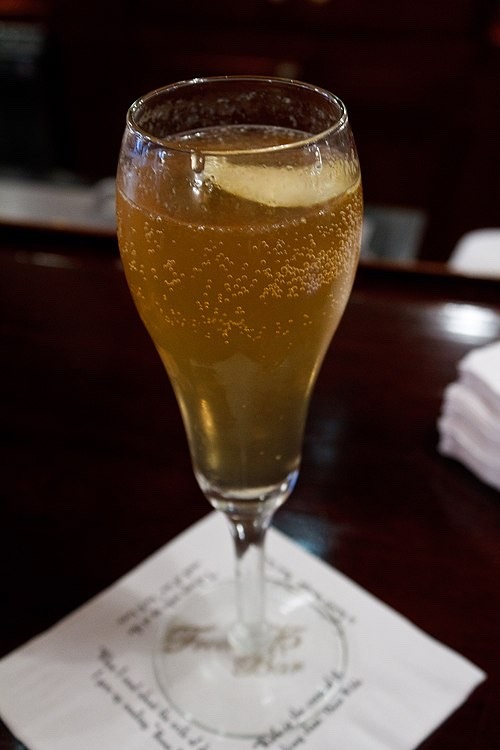
Though cocktail historians are unsure of the French 75's exact origin—some trace a cocktail of gin, champagne, sugar and citrus back to the 1860s—everyone agrees that one strand of its DNA points directly to a combination of cognac and champagne that used to be known as the "King's Peg." Those roots inform the swap-in for Grand Marnier, adding richness and complexity to this cocktail, and a pop of vibrance from the orange liqueur.
However, the popular story of the provenance of the French 75 (Soixante Quinze) is that a British Army Officer named George Clappison stationed in France at that moment. It was he who made this less potent cocktail. He put together the key ingredients at their disposal – London gin from home and the local champagne – to create a punchy drink, which he named after the iconic French M1897 75mm artillery gun. When the soldiers returned to their home, they brought the recipe along and since then, there has been no looking back, and the drink's fame was sealed in cocktail history.
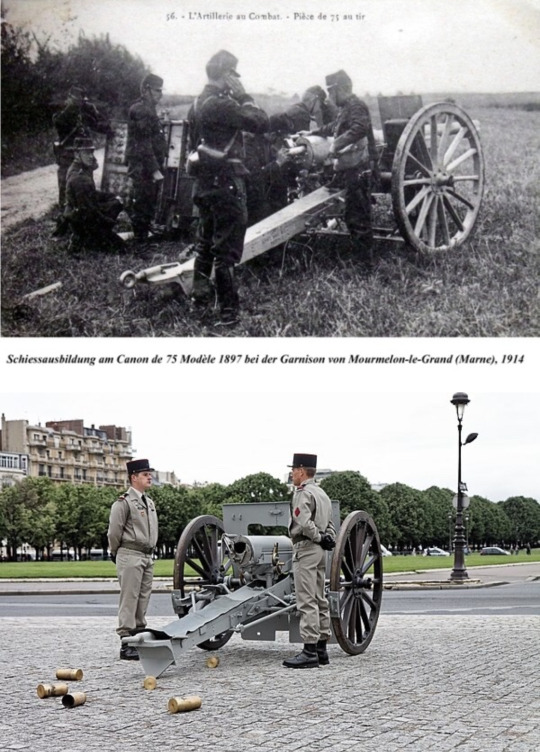
The Canon de 75 modèle 1897 is the source of the name of the cocktail. The Canon de 75 modèle 1897 is still used in France on ceremonial occasions.

Some legends also claim that this champagne-based cocktail was invented somewhere in the 1920s at the New York Bar in Paris—later Harry's New York Bar—by a Scottish barman from Dundee Harry MacElhone, and was originally called 75th Infantry. MacElhone began working at Ciro's Club in London after World War I and years after in 1923, he took it over and it became one of the world's most famous cocktail bars.
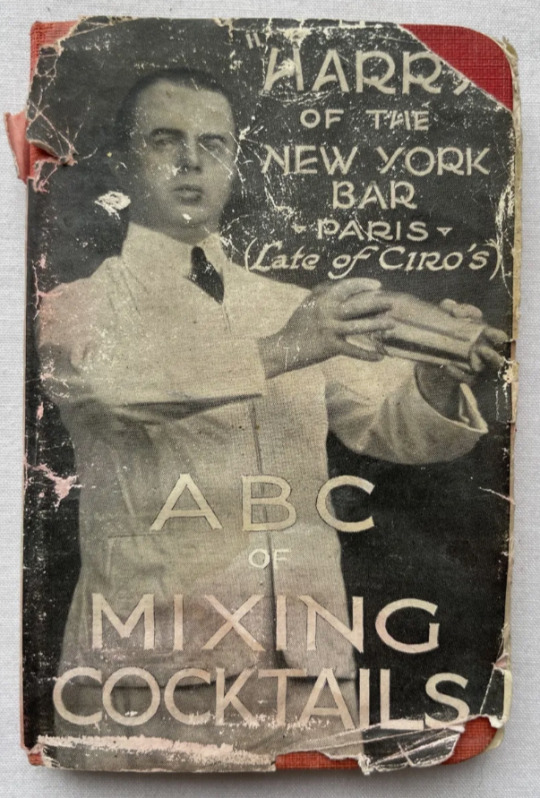
Harry’s A B C of Mixing Cocktails – Harry McElhone – C.1920’s

The cocktail gained popularity at New York City's famous Stork Club. This recipe was republished with the name "French 75" in The Savoy Cocktail Book (1930), which helped popularise the drink.
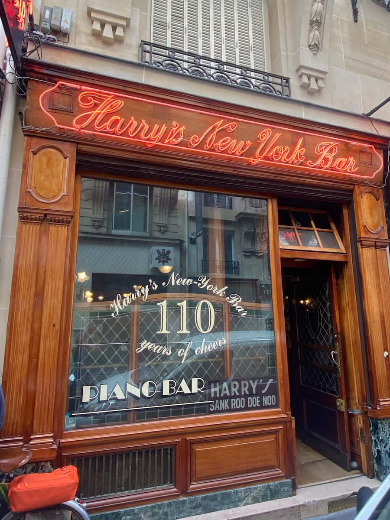
Harry's New York Bar in Rue Dannou, Paris's opera district in the 2nd arrondissement.
When the formula of gin or cognac, Champagne, lemon and sugar got the moniker of the fast-firing, accurate French field gun that had become an icon of victory in World War I, it suddenly took on a new cachet. As the British novelist Alec Waugh dubbed it, “the most powerful drink in the world.”

THE FRENCH 75: 1920s The British novelist Alec Waugh dubbed it “the most powerful cocktail in the world” and he was only half referring to its potent combination of liquor and champagne.
A few cocktails are mentioned in films, but, we're going to look at the French 75. This cocktail It's one of the most sophisticated and refreshing cocktails around and was referenced in the Oscar-winning film “Casablanca” in 1944.

It gained popularity through this Hollywood classic, where Humphrey Bogart and Ingrid Bergman's character regularly sipped on the cocktail in the nightclub. The French 75 seems to be the ultimate coping mechanism at Rick's Cafe for both sides of the battle.
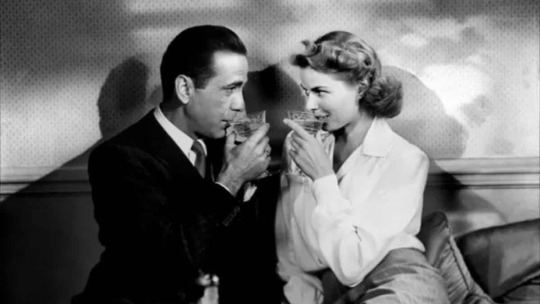
Early in its life, this classic cocktail was made with cognac. Gin quickly overtook it as the most popular base, and London dry is the preferred style of gin.
Those are not your only choices: The French 76 uses vodka, the French 95 features whisky, and almost every spirit (including tequila) has been used in this drink over the years. No matter which liquor you choose, the best French 75 is made with top-shelf brands and fresh juice No matter how this cocktail came into existence, there was nothing that could replace it. You can make this cocktail by following these simple steps!
French 75
INGREDIENTS:
.5 oz Lemon juice
1 tsp Sugar
2 oz London dry gin or cognac
Champagne, chilled
Glass: Champagne flute
PREPARATION:
Add the lemon juice and sugar to a shaker and stir to combine. Add the gin and fill with ice. Shake, and strain into a Champagne flute filled with cracked ice. Fill slowly with Champagne.
Note: The original French 75 cocktail recipe is not made with ice.
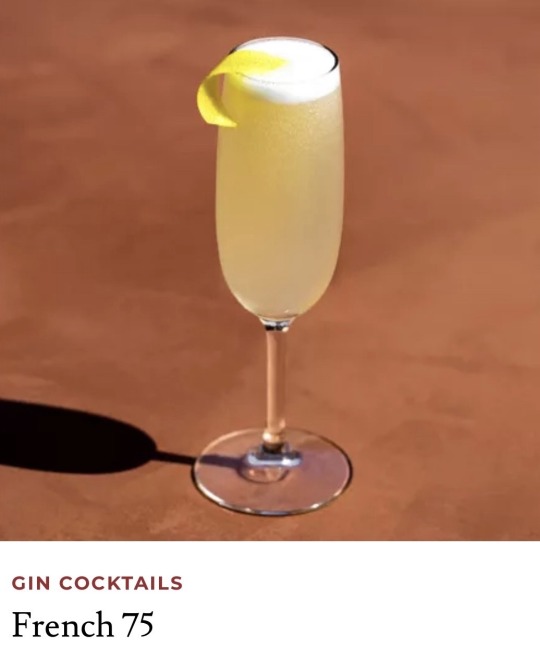
It's surprising how the French 75 cocktail is so popular outside of France. Yet look around the cocktail menus in most bars around Paris and elsewhere in France and, chances are, you'll not even see it listed!
#French75 #SoixanteQuinze #George Clappison #HarryMacElhone #75thInfantry #Ciro'sClub #London #WorldWarI #Harry'sNewYorkBar #Paris #Champagne #cognac #Britisharmy #EdwardPrinceofWales #King’sPeg #cocktail #BritishEmpire #AlecWaugh #novelist #film #Casablanca #At theEndofthePassage #story #RudyardKipling #FrenchM1897 #artillerygun #75mm
1 note
·
View note
Text
Matilda (1996), Danny DeVito



Unidentified book - if you know what book it is, write me in DM!

Kim, Rudyard Kipling
The Adventures of Tom Sawyer, Mark Twain
The Pickwick Papers, Charles Dickens
Lorna Doone: a Romance of Exmoor, Richard Doddridge Blackmore


The best of Sherlock Holmes, Arthur Conan Doyle
For Whom the Bell Tolls is a novel, Ernest Hemingway
Lord Jim, Joseph Conrad

Moby Dick, Herman Melville



Ivanhoe, Walter Scott
#bookwatching#books#literature#reading people#book seen in a movie#matilda#rohald dahl#matilda 6 mitica
0 notes
Text
"My content from my account is dedicated to Ling Ling and Kid Riddle, the two (adoptive) cousin detectives from Disney's Guilty Party."


Greetings, my name's Mia, and I'm a fan of my favorite characters from Disney's Guilty Party, Ling Ling and Kid Riddle.

And my content from my account is about posting some of my artworks and posts, which it only features these two (but sometimes with my main OC and my other OCs from Miaverse, or other characters from the video game or any other video games and fandoms), but it's also dedicated to Ling Ling and Kid Riddle, the two (adoptive) cousin detectives from Disney's Guilty Party.


"Ling Ling and Kid Riddle strike again!"
#guilty party#guilty party wii#disney's guilty party#disney#ling ling#ling ling johnson#kid riddle#rudyard dickens#ling ling & kid riddle#kid riddle & ling ling#ling ling & rudyard#rudyard & ling ling#wii
3 notes
·
View notes
Text
Literary works of the 19th Century
Below is a list of books that were published in the 19th Century and their authors:
1813 - Jane Austen - Pride and Prejudice
1818 - Mary Shelley - Frankenstein
1819 - John Keats - Six of his best known odes
1837 - Charles Dickens - Oliver Twist
1847 - Bronte sisters - Jane Eyre, Wuthering Heights
1863- Jules Verne - His collection of stories and novels
1865 - Lewis Carroll - Alice in Wonderland
1883 - Robert Louis Stevenson - Treasure Island
1886 - Robert Lois Stevenson - Strange case of Dr. Jekyll and Mr. Hyde
1887 - Sir Arthur Conan Doyle - Sherlock Holmes ( A Study in Scarlet)
1894 - Rudyard Kipling - The Jungle Book
1897 - Bram Stoker - Dracula
1900 - L.Frank Baum - The Wonderful Wizard of Oz
0 notes
Text
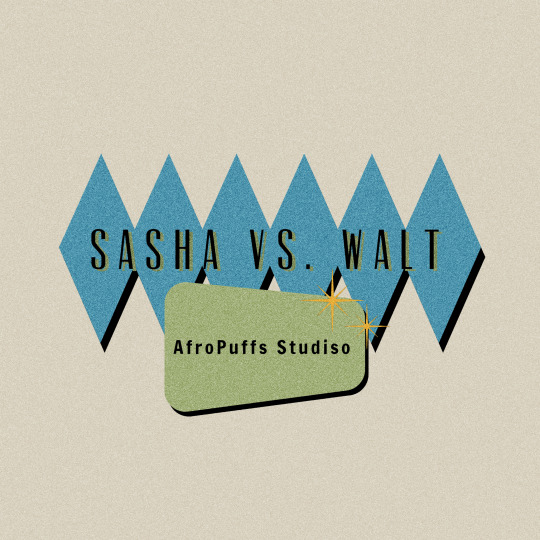
This is a continuation to a project I am working on for my podcast.
Here is the List 1 of Disney movies that are based on books, stories, or real life people. List 2.
The Little Mermaid by Hans Christian Andersen
Pinocchio by Carlo Collodi
Cinderella by Jacob & Wilhelm Grimm
The Jungle Book by Rudyard Kipling
The Hunchback of Notre-Dame by Victor Hugo
The Merry Adventures of Robin Hood by Howard Pyle
The 101 Dalmatians by Dodie Smith
Dumbo The Flying Elephant by Helen Aberson-Mayer, Hardold Pearl
Little Snow-White by Jacob and Wilhelm Grimm
Peter Pan by James Matthew Barrie
Anastasia (real life)
Princess Tiana (real life)
Aladdin (The Arabian Nights)
Alice in Wonderland by Lewis Carroll
Tangled (Rapunzel by Jacob and Wilhelm Grimm)
Pocahontas (real life)
The Fox and The Hound by Daniel P. Mannix
Old Yeller by Fred Gipson
Beauty and the Beast by Jeanne-Marie LePrince de Beaumont
The Color of Friendship (real life)
Frozen (The Snow Queen by Hans Christian Andersen)
Sleeping Beauty by Jacob and Wilhelm Grimm
Bambi, a Life in the Woods by Felix Salten
The Princess and the Frog (The Frog-Prince by Jacob and Wilhelm Grimm)
Mary Poppins Book Series by P.L. Travers
Oliver and Company (Oliver Twist by Charles Dickens)
The Black Cauldron (The Chronicles of Prydain by Lloyd Alexander)
Treasure Island by Robert Louis Stevenson
Freaky Friday by Mary Rodgers
The Princess Bride by William Goldman
The Princess Diaries Book Series by Meg Cabot
Tuck Everlasting by Natalie Babbitt
Holes by Louis Sachar
The Chronicles of Narnia Book Series by C.S. Lewis
Bridge to Terabithia by Katherine Paterson
A Wrinkle in Time by by Madeleine L'Engle
Percy Jackson and the Olympians Book Series by Rick Riordan
Alexander and the Terrible, Horrible, No Good, Very Bad Day by Judith Viorst; Ray Cruz (Illustrator)
Artemis Fowl Book Series by Eoin Colfer
Upside-Down Magic Book Series by Sarah Mlynowski
The One and Only Ivan by Katherine Applegate
Mickey's Christmas Carol (A Christmas Carol by Charles Dickens)
White Fang by Jack London
Zenon: Girl of the 21st Century Book Series by Marilyn Sadler
Winnie-the-Pooh by A.A. Milne
Zapped (Boys Are Dogs by Leslie Margolis)
Google Search: disney movies that are based on books
0 notes
Text
Holidays 12.1
Holidays
Antarctica Day
Basketball Day
Battle of the Sinop Day (Russia)
Becky Thatcher Day
Bifocals at the Monitor Liberation Day
Bizarre Bazaar
Chia Pet Hunting Season begins
Civil Air Patrol Day
Commemoration Day (UAE)
Crossing of the Cattle at Diafarabe (Mali)
Damrong Rajanuhab Day (Thailand)
Data Innovation Day
Day of the First President (Kazakhstan)
Day With(out) Art
First President Day (Kazakhstan)
Freedom and Democracy Day (Chad)
Fullveldisdagurinn (a.k.a. Self-Governance Day; Iceland)
Indigenous Faith Day (Arunachal, India)
International Prisoners for Peace Day
Military Abolition Day (Costa Rica)
MMMHop Beer Day
My Husband Strung the Xmas Lights and Now I Can't Open the Garage Door Day
National Christmas Book Day
National Christmas Lights Day
National Day of Courage
National Jandal Day (New Zealand)
National Online Risk and Compliance Day
National Sabbath-Keeping Schools Day
National Transit Tribute to Rosa Parks Day
National Women Support Women Day
National Zinc Day
Operation Santa Paws begins [until 21st]
Peaceful Easy Feeling Day (San Diego, California)
Playboy Magazine Day
Prisoners for Peace Day
Proclamation of the Republic (Central African Republic)
Rosa Parks Day (Ohio, Oregon) [also 2.4]
Scrabble Day
Special Kids Day [1st Wednesday]
Teachers’ Day (Panama)
University Student Strike Day (Myanmar)
Wallace & Gromit’s Great British Tea Party begins (thru 21st)
Wear a Dress Day [also 6.1]
Weather Service Day
World AIDS Day (UN)
World Trick Shot Day
Yukon Order of Pioneers Day
Ziua Unirii (Romania)
Food & Drink Celebrations
Dr. Pepper Day
Eat A Red Apple Day
National Baked Alaska Day
National Fried Pie Day
National Pie Day [also 1.23]
1st Thursday in December
Lover's Fair (Arlon, Belgium) [1st Thursday]
Independence Days
Great Union Day (celebrating merger of Transylvania & Romania, 1918)
Iceland (from Denmark, 1918)
Portugal (from Spain, 1640) [a.k.a. Restoration of Independence]
Feast Days
Alexander Briant (Christian; Saint)
Ansanus (Christian; Saint)
Barbes Diena (Sheep Fertility Festival; Ancient Latvia)
Bruna Pellesi (Christian; Blessed)
Castritian (Christian; Saint)
Charles de Foucauld (Christian; Blessed)
Edmund Campion (Christian; Saint)
Eligius (a.k.a. Eloy), Bishop of Noyon (Christian; Saint)
Evasius (Christian; Saint)
Feast for the Death of Aleister Crowley (Thelema)
Feast of Saints Kyle, Stan, Cartman and Kenny (Church of the SubGenius; Saints)
Festival for Neptune/Poseidon (Ancient Greece/Rome)
Festival for Pietas (Goddess of Devotion; Ancient Rome)
Francia (Positivist; Saint)
Grwst (Christian; Saint)
Juner (Muppetism)
Kalends of December (Ancient Rome)
Marijuana Sauce Day (Pastafarian)
Mindfulness Day (Zen Buddhism)
Mothra Day (Church of the SubGenius; Saint)
Nahum (Christian; Saint)
Nicholas Ferrar (Episcopal Church)
Ralph Sherwin (Christian; Saint)
Ursicinus of Brescia (Christian; Saint)
Lucky & Unlucky Days
Shakku (赤口 Japan) [Bad luck all day, except at noon.]
Premieres
Adventures of Don Juan (Film; 1948)
Axis: Bold As Love, by Jimi Hendrix (Album; 1967)
Blondie, by Blondie (Album; 1976)
Candide, by Leonard Bernstein (Operetta; 1956)
A Charlie Brown Christmas, by Vince Guarldi (Soundtrack Album; 1965)
Christmas Vacation (Film; 1989)
A Connecticut Yankee in King Arthur's Court, by Mark Twain (Novel; 1884)
Dark (German TV Series; 2017)
The Floating Admiral, by the Detection Club (Mystery Novel; 1931)
The Girl Can’t Help It (Rock Music Film; 1956)
Great Expectations, by Charles Dickens (Novel; 1836)
Happy Xmas (War Is Over), by John Lennon (Song; 1971)
Hi, Hi, Hi, by Wings (Song; 1972)
The House of the Rising Sun, by Frijid Pink (Song; 1969)
Kim, by Rudyard Kipling (Novel; 1900)
The Life and Opinions of Tristram Shandy, Gentlemen, by Laurence Sterne (Novel; 1759)
No Logo, by Naomi Klein Book; 1999)
Northanger Abbey, by Jane Austen (Novel; 1817) [#5]
Promises, Promises (Broadway Musical; 1968)
Return of the King (Film; 2003) [Lord of the Rings #3]
The Thin Man, by Dashiell Hammett (Novel; 1934)
Withering Heights, by Emily Bronte (Novel; 1847)
Today’s Name Days
Blanka, Charles, Eligius, Natalie (Austria)
Blanka, Florencija, Kazimir, Natalija, Naum (Croatia)
Iva (Czech Republic)
Arnold (Denmark)
Oskar, Osmar, Oss (Estonia)
Oskar, Oskari (Finland)
Florence(France)
Blanka, Eligius, Natalie (Germany)
Areti, Jacob, Naoum, Philaretos, Theoklitos (Greece)
Elza (Hungary)
Ansano, Eligio (Italy)
Arnolds, Arvaldis (Latvia)
Algmina, Butigeidas, Eligijus, Natalija (Lithuania)
Arnljot, Arnold, Arnt (Norway)
Długosz, Edmund, Eliga, Eligiusz, Iwa, Natalia, Natalis, Platon, Sobiesława (Poland)
Edmund (Slovakia)
Blanca, Cándida, Eloy (Spain)
Oskar, Ossian (Sweden)
Bianca, Blanca, Blanche, Eli, Ely, Sherwin (USA)
Today is Also…
Day of Year: Day 335 of 2022; 30 days remaining in the year
ISO: Day 4 of week 48 of 2022
Celtic Tree Calendar: Ruis (Elder) [Day 6 of 28]
Chinese: Month 11 (Dōngyuè), Day 8 (Wu-Zi)
Chinese Year of the: Tiger (until January 22, 2023)
Hebrew: 7 Kislev 5783
Islamic: 7 Jumada I 1444
J Cal: 5 Zima; Foursday [5 of 30]
Julian: 18 November 2022
Moon: 61%: Waxing Gibbous
Positivist: 27 Frederic (12th Month) [Francia]
Runic Half Month: Is (Stasis) [Day 7 of 15
Season: Autumn (Day 70 of 90)
Zodiac: Sagittarius (Day 9 of 30)
Calendar Changes
December (Gregorian Calendar) [Month 12 of 12]
0 notes
Text
Holidays 12.1
Holidays
Antarctica Day
Basketball Day
Battle of the Sinop Day (Russia)
Becky Thatcher Day
Bifocals at the Monitor Liberation Day
Bizarre Bazaar
Chia Pet Hunting Season begins
Civil Air Patrol Day
Commemoration Day (UAE)
Crossing of the Cattle at Diafarabe (Mali)
Damrong Rajanuhab Day (Thailand)
Data Innovation Day
Day of the First President (Kazakhstan)
Day With(out) Art
First President Day (Kazakhstan)
Freedom and Democracy Day (Chad)
Fullveldisdagurinn (a.k.a. Self-Governance Day; Iceland)
Indigenous Faith Day (Arunachal, India)
International Prisoners for Peace Day
Military Abolition Day (Costa Rica)
MMMHop Beer Day
My Husband Strung the Xmas Lights and Now I Can't Open the Garage Door Day
National Christmas Book Day
National Christmas Lights Day
National Day of Courage
National Jandal Day (New Zealand)
National Online Risk and Compliance Day
National Sabbath-Keeping Schools Day
National Transit Tribute to Rosa Parks Day
National Women Support Women Day
National Zinc Day
Operation Santa Paws begins [until 21st]
Peaceful Easy Feeling Day (San Diego, California)
Playboy Magazine Day
Prisoners for Peace Day
Proclamation of the Republic (Central African Republic)
Rosa Parks Day (Ohio, Oregon) [also 2.4]
Scrabble Day
Special Kids Day [1st Wednesday]
Teachers’ Day (Panama)
University Student Strike Day (Myanmar)
Wallace & Gromit’s Great British Tea Party begins (thru 21st)
Wear a Dress Day [also 6.1]
Weather Service Day
World AIDS Day (UN)
World Trick Shot Day
Yukon Order of Pioneers Day
Ziua Unirii (Romania)
Food & Drink Celebrations
Dr. Pepper Day
Eat A Red Apple Day
National Baked Alaska Day
National Fried Pie Day
National Pie Day [also 1.23]
1st Thursday in December
Lover's Fair (Arlon, Belgium) [1st Thursday]
Independence Days
Great Union Day (celebrating merger of Transylvania & Romania, 1918)
Iceland (from Denmark, 1918)
Portugal (from Spain, 1640) [a.k.a. Restoration of Independence]
Feast Days
Alexander Briant (Christian; Saint)
Ansanus (Christian; Saint)
Barbes Diena (Sheep Fertility Festival; Ancient Latvia)
Bruna Pellesi (Christian; Blessed)
Castritian (Christian; Saint)
Charles de Foucauld (Christian; Blessed)
Edmund Campion (Christian; Saint)
Eligius (a.k.a. Eloy), Bishop of Noyon (Christian; Saint)
Evasius (Christian; Saint)
Feast for the Death of Aleister Crowley (Thelema)
Feast of Saints Kyle, Stan, Cartman and Kenny (Church of the SubGenius; Saints)
Festival for Neptune/Poseidon (Ancient Greece/Rome)
Festival for Pietas (Goddess of Devotion; Ancient Rome)
Francia (Positivist; Saint)
Grwst (Christian; Saint)
Juner (Muppetism)
Kalends of December (Ancient Rome)
Marijuana Sauce Day (Pastafarian)
Mindfulness Day (Zen Buddhism)
Mothra Day (Church of the SubGenius; Saint)
Nahum (Christian; Saint)
Nicholas Ferrar (Episcopal Church)
Ralph Sherwin (Christian; Saint)
Ursicinus of Brescia (Christian; Saint)
Lucky & Unlucky Days
Shakku (赤口 Japan) [Bad luck all day, except at noon.]
Premieres
Adventures of Don Juan (Film; 1948)
Axis: Bold As Love, by Jimi Hendrix (Album; 1967)
Blondie, by Blondie (Album; 1976)
Candide, by Leonard Bernstein (Operetta; 1956)
A Charlie Brown Christmas, by Vince Guarldi (Soundtrack Album; 1965)
Christmas Vacation (Film; 1989)
A Connecticut Yankee in King Arthur's Court, by Mark Twain (Novel; 1884)
Dark (German TV Series; 2017)
The Floating Admiral, by the Detection Club (Mystery Novel; 1931)
The Girl Can’t Help It (Rock Music Film; 1956)
Great Expectations, by Charles Dickens (Novel; 1836)
Happy Xmas (War Is Over), by John Lennon (Song; 1971)
Hi, Hi, Hi, by Wings (Song; 1972)
The House of the Rising Sun, by Frijid Pink (Song; 1969)
Kim, by Rudyard Kipling (Novel; 1900)
The Life and Opinions of Tristram Shandy, Gentlemen, by Laurence Sterne (Novel; 1759)
No Logo, by Naomi Klein Book; 1999)
Northanger Abbey, by Jane Austen (Novel; 1817) [#5]
Promises, Promises (Broadway Musical; 1968)
Return of the King (Film; 2003) [Lord of the Rings #3]
The Thin Man, by Dashiell Hammett (Novel; 1934)
Withering Heights, by Emily Bronte (Novel; 1847)
Today’s Name Days
Blanka, Charles, Eligius, Natalie (Austria)
Blanka, Florencija, Kazimir, Natalija, Naum (Croatia)
Iva (Czech Republic)
Arnold (Denmark)
Oskar, Osmar, Oss (Estonia)
Oskar, Oskari (Finland)
Florence(France)
Blanka, Eligius, Natalie (Germany)
Areti, Jacob, Naoum, Philaretos, Theoklitos (Greece)
Elza (Hungary)
Ansano, Eligio (Italy)
Arnolds, Arvaldis (Latvia)
Algmina, Butigeidas, Eligijus, Natalija (Lithuania)
Arnljot, Arnold, Arnt (Norway)
Długosz, Edmund, Eliga, Eligiusz, Iwa, Natalia, Natalis, Platon, Sobiesława (Poland)
Edmund (Slovakia)
Blanca, Cándida, Eloy (Spain)
Oskar, Ossian (Sweden)
Bianca, Blanca, Blanche, Eli, Ely, Sherwin (USA)
Today is Also…
Day of Year: Day 335 of 2022; 30 days remaining in the year
ISO: Day 4 of week 48 of 2022
Celtic Tree Calendar: Ruis (Elder) [Day 6 of 28]
Chinese: Month 11 (Dōngyuè), Day 8 (Wu-Zi)
Chinese Year of the: Tiger (until January 22, 2023)
Hebrew: 7 Kislev 5783
Islamic: 7 Jumada I 1444
J Cal: 5 Zima; Foursday [5 of 30]
Julian: 18 November 2022
Moon: 61%: Waxing Gibbous
Positivist: 27 Frederic (12th Month) [Francia]
Runic Half Month: Is (Stasis) [Day 7 of 15
Season: Autumn (Day 70 of 90)
Zodiac: Sagittarius (Day 9 of 30)
Calendar Changes
December (Gregorian Calendar) [Month 12 of 12]
0 notes